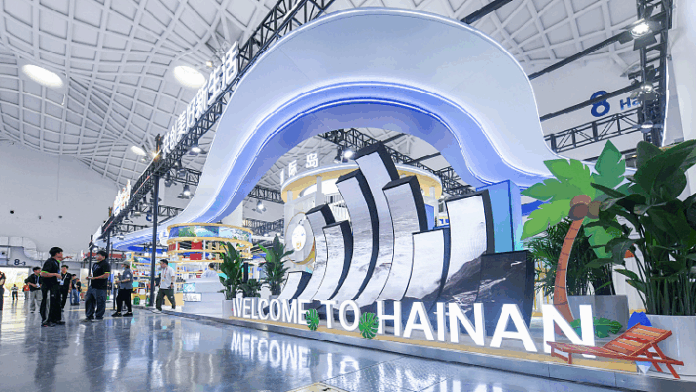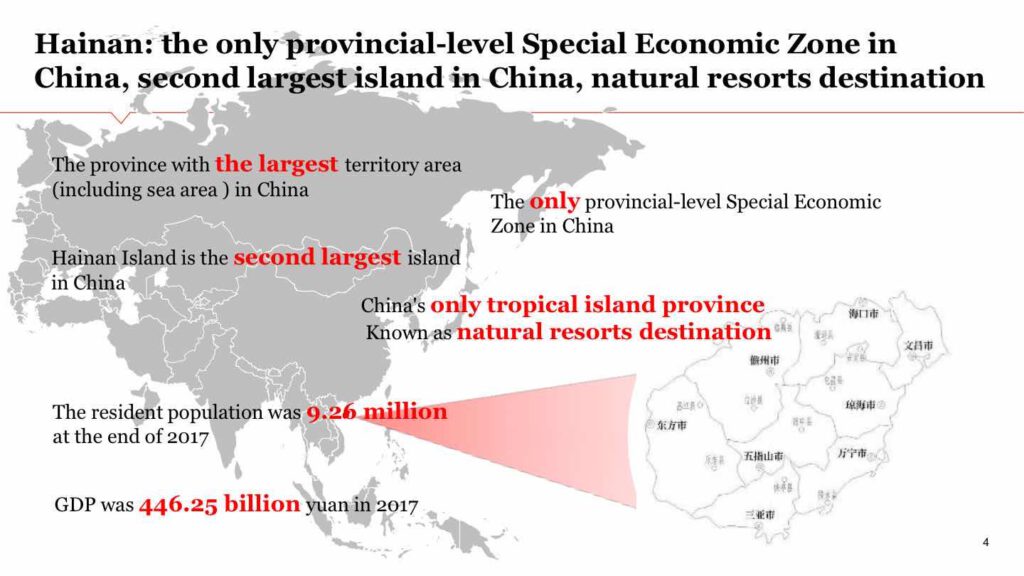
Chi Fulin, President of the China (Hainan) Institute for Reform and Development and of the Hainan Free Trade Port Institute, emphasized Hainan’s strategic role as a central hub linking the Pacific and Indian Oceans. Positioned at the heart of China’s high-level openness agenda, Hainan’s development as a free trade port embodies both national strategic priorities and a historical responsibility to serve as a gateway to global markets.
As regional economic integration becomes a defining trend, China is intensifying its efforts to advance autonomous and unilateral liberalization, particularly within the framework of the Regional Comprehensive Economic Partnership (RCEP). Accelerating the implementation of tariff reduction commitments under RCEP—especially those set for 2030 and beyond—could catalyze trade and investment. Expanding “zero tariff” coverage beyond 95% appears feasible, given favorable conditions and manageable risk. Meanwhile, tariff reductions on intermediate goods from ASEAN are gaining priority, supporting deeper integration of regional supply chains under cumulative rules of origin. This would allow ASEAN enterprises to become more embedded in China’s production networks.
China is also expected to further ease outbound investment restrictions in high-potential sectors such as high-speed rail, power equipment, new energy, auto components, and agricultural processing. Collaborative industrial parks in ASEAN could serve as hubs for producing electric vehicles, photovoltaic equipment, and electromechanical products. Momentum is also building around digital and green supply chains, areas where bilateral cooperation is set to deepen. Trade facilitation is another key priority. The forthcoming China-ASEAN FTA Version 3.0 will likely push forward more robust rules on standards, technical regulations, and conformity assessments, enhancing supply chain connectivity and aligning with RCEP commitments.
Agricultural trade is also in focus. Strengthened coordination on sanitary and phytosanitary (SPS) measures could help reduce non-tariff barriers. China may support ASEAN countries with capacity-building and work toward a common agricultural market. These initiatives reflect China’s broader goal of increasing regional cooperation while relying on unilateral moves to set the pace for integration.

To reinforce its global competitiveness, China must expand unilateral liberalization in key sectors. The visa-free regime should be extended to more countries—especially from the EU, ASEAN, and GCC—and allow entries for medical treatment, short-term education, training, and cultural exchange. Duration of stay should be extended from 30 to 90 days nationally, and to 180 days in Hainan. Multi-point entries and integration with transit visa-free policies should be encouraged to attract foreign talent and facilitate movement.
In education, China should move beyond joint ventures and allow wholly foreign-owned institutions, particularly in vocational training. International students should be offered post-graduation residence periods of 6 to 36 months through OPT-like schemes, with eligibility to bring dependents. A national policy focused on STEM education could attract top global talent in critical technologies through eased application procedures and accelerated institutional collaboration.
Healthcare liberalization should follow the Hainan model by permitting wholly foreign-owned hospitals to operate in major cities and by granting equal treatment to foreign providers. China should support the entry of international medical services and qualified foreign doctors, while encouraging foreign insurer-hospital cooperation to deliver cross-border coverage. Approval processes for drugs and devices must be streamlined.
Telecommunications should be opened beyond current pilot zones, in line with China’s commitments under the China-EU Comprehensive Agreement on Investment (CAI). Areas such as international communications and satellite services need greater liberalization. In culture, China should simplify procedures for foreign performers and investors, and decentralize decision-making in cultural infrastructure projects.
A proactive global talent strategy is needed. China should establish a simplified work permit system, diversify visa types, fast-track green cards for in-demand professionals, and recognize foreign qualifications unilaterally. In science and technology, foreign enterprises should be allowed to participate more fully by easing application barriers and encouraging collaborative innovation.
In finance, broader use of FT accounts across free trade zones will improve cross-border capital flow. Bilateral local currency settlement, especially in Belt and Road energy and infrastructure projects, should be promoted. China must expand RMB settlement, emulate China-Russia trade practices, boost the role of the CIPS payment system, and develop multi-functional accounts in Hainan to facilitate capital convertibility.
Unilateral trade liberalization can also drive deeper regional integration. With Japan and South Korea, China should reduce tariffs on high-tech goods and deepen service trade in health, tourism, and the environment. For the GCC, zero-tariff policies should be pursued alongside industrial collaboration in energy and logistics. With the EU, applying CAI provisions ahead of ratification would open financial and service sectors and encourage fair competition. In Latin America, China should lower tariffs on agricultural and energy exports and co-develop major infrastructure projects.
Domestically, this liberalization strategy should upgrade existing free trade zones. Shanghai can lead financial innovation; Guangdong can integrate service trade with Hong Kong and Macao; Liaoning and Heilongjiang can facilitate Northeast Asian imports; and Hubei can focus on tech-driven openness. Border provinces like Xinjiang, Guangxi, and Yunnan should become reform frontiers through alignment with RCEP and ASEAN initiatives. Land ports such as Suifenhe and Mohan should be empowered with more autonomous customs and trade facilitation policies.
At the core of this strategy lies the Hainan Free Trade Port, envisioned as China’s flagship platform for high-level opening. It must accelerate the implementation of dual customs supervision and roll out a zero-tariff policy covering over 99% of goods. Drawing lessons from global benchmarks like Hong Kong and Singapore, Hainan aims to become a globally integrated, high-standard economic zone marked by institutional autonomy and forward-looking policy frameworks.
Source: CIRD, China Reform, CGTN, Global Times, Tropical Hainan



